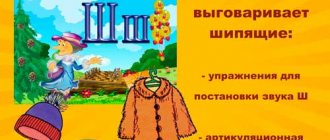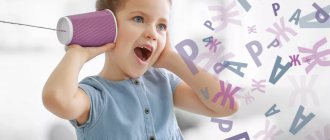The ability to speak beautifully in the modern world is necessary not only for politicians, journalists and teachers. Even if there is no need to constantly speak at conferences, it is important to present yourself correctly - because success at work, career advancement and getting a job depend on it. Oratory is the most important skill that allows you to concisely and simply convey your opinion to your interlocutor. Some people are naturally eloquent, while others have to learn it. There are special exercises that will help you master useful science.
How to learn public speaking
Oratory skills can be improved in two ways. Take special courses or engage in self-education.
Self-directed learning has particular advantages. You can study on your own schedule and try out all kinds of techniques. For training, you should use special video lessons, tutorials and useful recommendations.
Learning public speaking is possible at any age. It will be useful for both young and experienced professionals. With such a skill, it is necessary to constantly expand your abilities and skills in the field of rhetoric. This will help in studies, business and personal relationships.
Effective exercises
So, let's look at useful exercises that you can do at home:
- Exercises with a voice recorder help you understand the peculiarities of your speech - the presence of filler words, hesitations and tempo.
- A limited vocabulary causes great difficulties in communication. To enrich your vocabulary, you need to choose a subject, and then talk about it, its characteristics, advantages and disadvantages for five minutes.
- The main enemy of beautiful speech is parasitic words. You need to learn to think about what you need to talk about. You should control your speech and eliminate verbal garbage.
- The pace of speech is of particular importance. Speech that is too slow causes boredom, and fast speech is difficult to digest.
- It is necessary to regularly train communication skills, and for this to communicate with real people.
- Speech should be enlivened with small jokes, quotes from famous people and sayings.
In addition, to expand your vocabulary, you need to read a lot. It can be business literature, fiction, science or fantasy. While reading, you need to try to analyze each phrase.
Oratory exercises
Public speaking is one of the most popular training topics. And this is not surprising, because many people need the skills of rhetoric and public speaking. Oratory skills are necessary both for work tasks and in order to be an interesting conversationalist and a charismatic leader.
At public speaking trainings, special exercises are used that open up the participants, develop their ability to speak easily, convincingly and beautifully, and help participants master the great art of oratory.
And trainers who teach oratory often have a question about where to get new interesting exercises that will not only strengthen the participants’ oratory skills, but also actively involve the group, increase its energy and motivation, and will be liked and remembered by the training participants.
Experts from the largest professional portal for trainers TRENERSKAYA.RU have selected for you several high-quality exercises for developing public speaking skills that you can safely use in your public speaking trainings.
Exercise to develop oratory skills “Debates”
Goal : training to speak in front of a group, developing argumentation skills.
Time : 10 minutes per participant.
Number of participants : unlimited.
Carrying out the exercise:
The presenter sets the topic of the speech and calls two participants. They take turns speaking on a chosen topic for 2 minutes. After the speech, the participant answers questions from the audience. His opponent has the right to ask first.
Then his opponent speaks in the same format, also for 2 minutes.
After two performances, listeners vote for each speaker and choose a winner.
Each new pair is given a new topic.
Exercise for public speaking training “Linked Words”
Goal : training creativity in speech.
Time : five minutes per participant.
Number of participants : unlimited.
Carrying out the exercise:
The presenter prepares several tickets (pieces of paper) in advance. Each one has one word written on it (for example, penguin, hat, umbrella, etc.). The participant draws two tickets at random and composes a 2-minute speech in which he plays on these words. You need to make a logical presentation.
After the performance, listeners give feedback:
- How logical was the presentation? Related? Beautiful?
- I wonder if you noticed these 2 words?
Recommendation from the expert of the largest portal for trainers TRENERSKAYA.RU Olga Paratnova:
To make the process more lively, it is more convenient to do this exercise in micro groups, for example, 6-7 participants. This way, less time will be needed, and the participants will not get tired.
The inclusion of the group will be even higher if you give them the opportunity to write 2-3 tickets themselves, then put them in a common basket (in each micro-group), and pull them out from there.
Exercise for the development of oratory “Interview”
Goal: training in argumentation and stress resistance.
Time: 5–7 minutes per participant.
Number of participants: unlimited.
Carrying out the exercise:
We call two participants. One conducts, the other conducts the interview. The purpose of the negotiations is to get a job or increase your salary. In these negotiations, the applicant should use as much argumentation as possible why they should hire him (or why it is really necessary to increase his salary).
Then we summarize:
- Were you able to complete the task?
- What helped/hurt?
Then the participants change roles in the same pair.
These exercises are taken from free sources, so you need to keep in mind that they:
- may already be known to your members. This is worth clarifying before carrying out the exercises.
- do not contain detailed instructions and methods for conducting the exercise. and most likely, you will need to run them several times to find the most successful and effective format.
When you need exercises on other topics and want them to be:
- the best exercises for training
- exclusive exercises known only to a narrow circle of professional trainers
- exercises with a detailed coaching methodology for carrying them out , explaining exactly how to carry out the exercise and summing up the results of the exercise in order to achieve the best result,
you can select such exercises on a professional coaching portal
This portal grew on the basis of the largest training-. Over more than 30 years of work, we have collected probably the largest database of the best games and exercises for business and personal training.
And when we realized that trainers are constantly faced with the problem of a lack of quality training material, we assembled a team of professional trainers who:
- select only the best , most professional and effective exercises on a wide variety of coaching topics
- professionally and in detail describe the hidden methodology for carrying them out!
And you can purchase our exclusive training exercise manuals at the most affordable prices in the “Exercises for Training” section or purchase ready-made training programs in the “Training Programs” section.
We recommend that you look, first of all, at the following training exercises:
Exercise “My Capital”
The “My Capital” exercise is exclusive; you will not find it on any other resource.
This is a challenge game, a competition game, at the beginning of which all participants in the training have an equal amount of resources, and at the end of the game the participants end up with very different results. During this exercise, group members are arranged in a clear ranking, and the one who knows how to look at what is happening impartially, objectively, and correctly evaluate other people has a greater chance of winning.
Usually, the game “My Capital” evokes many different emotions and provides rich food for thought. And it leaves no one indifferent - that’s for sure!
Exercise "Traffic Light"
The “Traffic Light” exercise is unique because it is the original development of psychology professor N.I. Kozlov.
An exercise incredibly effective in its effectiveness, capable of making a “revolution” in the minds of the training participants in just an hour. A real "pearl".
Many people do not know how to appreciate what they already have in their lives: material, spiritual benefits, relationships with loved ones. If, in an unexpected way, a person loses what he previously had, he finds himself in a state of emotional negativity. And the stronger the degree of negativity the event, the more difficult it is for a person to maintain his positive attitude towards people in particular and towards life in general. Using this tool, the trainer helps participants, without going through a situation of loss in life, take an inventory of their values, while simultaneously reducing their emotional involvement in an unpleasant situation.
Exercise “Find your favorite job”
A good targeted exercise that allows you to quickly help in solving one of the most exciting questions: “How to choose a job (business, profession) that would be not only profitable, but also pleasant (interesting)?”
Simple technology will help training participants believe that, firstly, the combination of “favorite job” is very possible, and secondly, to take an inventory of their desires, skills and correlate them with activities (professions) that can generate profit.
Exercise “Sell your weakness”
With a high degree of probability, this exercise can be called a “win-win option,” so it is perfect not only for experienced trainers, but also for beginners.
A simple and effective exercise that can quickly change the participants’ attitude towards their shortcomings, raise self-esteem, increase self-confidence and open up a world of positive thinking.
One of the best of its kind.
The exercise significantly increases the energy and involvement of the group, creates a positive atmosphere and activates the creativity of the participants.
Did you like the article? Click on the social media buttons and share it with friends and colleagues:
Correct breathing training
To avoid stuttering and shortness of breath during speech, it is recommended to perform special breathing exercises. Deep breathing is important for an expressive and deep voice. To do this, you need to slowly inhale and exhale while holding your breath.
There is also an exercise to train the diaphragm. It is necessary to pronounce a piece of small text without closing your mouth. You need to breathe with your diaphragm, not your chest.
Good posture allows you to breathe properly. The chin should be raised and the shoulders should be pulled back.
Exercises for diction and voice
There are special exercises for developing euphony and voice strength:
- You need to name the floors, raising your voice with each subsequent floor, and then going down.
- The words are spoken slowly, then the pace of speech speeds up and slows down again.
To develop diction, it is necessary to pronounce complex combinations of sounds, slowly and then quickly. Tongue twisters with alternating consonant sounds are also effective:
- Buy a pile of spades.
- The cap is sewn, but not in the Kolpakov style. It is necessary to re-cap and re-cap.
- Standing, standing at the gate, is a bull with a blunt mouth and wide short length.
The words should be pronounced very clearly. Each word should sound completely and clearly. To practice tempo, speech volume and pronunciation, you need to read aloud. You can also practice in front of a mirror.
Useful tips
Constant practice is important for developing eloquence. It is necessary to expand your social circle and communicate with new and interesting people. It is useful to observe the speech of presenters and attend special trainings. You need to fill your vocabulary with good jokes. To do this, you can memorize jokes and watch humorous programs.
Some tips will help you quickly master the science of eloquence:
- Voice training exercises should be performed indoors, without carpet. This will allow you to hear your voice better.
- Exercises for developing a singing voice will also be useful.
- It is recommended to do special gymnastics to create correct posture.
- While the vocal cords are working, it is important to feel the vibration in your back, chest and neck. This phenomenon allows you to make your voice pleasant and voluminous.
- The lips and jaws should be relaxed. This will allow you to achieve the required volume.
- You need to speak loudly, as quiet speech may not be heard.
- When speaking, you should relax your shoulders, which contributes to a softer sounding voice.
Exercises for older preschool children
Rhetoric (exercises for the development of oral speech train the centers of the brain) has different levels of complexity. For children of senior preschool age, classes are held, the content of which corresponds to the amount of knowledge of each child.
Exercise “Story on a free topic”
To perform this collective exercise, it is enough for a group of children to be formed in the amount of 5 to 10 people. The average duration of a lesson is from 25 to 50 minutes. This is the period of time that will allow you to achieve maximum productivity in the educational process, as well as maintain a sufficient level of interest in children. Each child is given about 5 minutes to perform.
Goals and objectives
The main goal and objective of the exercise is to effectively form a culture of child’s speech behavior.
Equipment and materials
To conduct this lesson you will need the following equipment and materials:
- chairs to seat all group members, creating a target audience for the speaker;
- a clock with a timer to record the duration of each child’s performance;
- a chair and desk for the teacher, who sits away from the children;
- an improvised stage on which each child will appear during their performance.
After completing the preparatory activities, you can begin this exercise.
Methodology used
During this exercise, it is recommended to use a technique for assessing the progress of each child. To do this, you will need to prepare a checklist in advance, which will display the achievements of all students.
Introduction
At this stage, the teacher invites the children to take turns going on stage and performing an oral story on a given topic. The teacher focuses on the fact that the narration should be expressive, interesting, but at the same time as concise as possible, since each speaker has only 5 minutes.
Progress of the lesson
Completing the exercise “Story on a free topic” involves following the following algorithm of actions:
- The teacher invites the child onto an improvised stage in front of an audience of other children.
- Then the teacher asks the student to tell a story about a particular event. For example, a story on the topic: “How I visited my grandmother,” “Fishing trip with my father,” “My pet.” The topic for the story is chosen to be free and accessible to a child of the appropriate age.
- The child talks about a given topic for 5 minutes.
- After this, the teacher, together with the children, thanks the speaker, and then invites the next child to speak.
Children who are lost, embarrassed or have difficulty telling a story during a speech need to be encouraged and given confidence in their actions.
Knowledge control
At the end of the training, the teacher fills out a checklist in which he evaluates the speaking abilities of each child.
The following criteria are taken into account:
- clarity of speech;
- expressiveness;
- richness of vocabulary;
- content of the speech;
- brevity.
To carry out the assessment, a scale of 5 or 10 points is used. At the same time, the results of knowledge control are not disclosed to the children, but are used only by the teacher to further improve the rhetorical skills of each child.
The final stage
At the final stage of this lesson, the children thank each other for the interesting stories they heard during this exercise.
Exercise “Characteristics of an object”
Characterizing an object is an exercise that requires forming a group of 5 children. The average duration of a performance for 1 child is 10 minutes.
In total, the lesson lasts 50 minutes. working hours.
Goals and objectives
The purpose of this lesson is to form in the child the initial inclinations for oratory skills, to teach him the correct and consistent presentation of thoughts.
Equipment and materials
To conduct this lesson you will need to use the following materials:
- ball;
- Toothbrush;
- pencil;
- paper;
- plasticine.
All children of primary preschool age are familiar with these objects and can also describe their characteristics and purpose.
Methods used
During this lesson, methods are used in the form of assessing the child’s abilities using a checklist, and also use presentation techniques.
Introduction
At the preparatory stage, the teacher places the above items on the table in front of the children. After this, the teacher tells the children that they need to take turns standing up, coming forward and describing one of these things.
Progress of the lesson
An exercise to develop rhetorical abilities “Characteristics of the subject” is performed as follows:
- The teacher invites the child to an impromptu stage.
- The speaker receives one of the items described in the section above.
- According to the teacher’s instructions, the child spends 10 minutes. must tell the maximum amount of information about the thing given to him. The characteristics of the object and its intended purpose are fulfilled.
- After the specified period of time has passed, the child sits down, and the next group member is invited to perform.
During this lesson, the teacher can ask the child leading questions that simplify the storytelling process.
Knowledge control
Based on the results of the training, the teacher assigns grades to all participants in a checklist.
The final stage
At the final stage of the lesson, the teacher thanks the children for participating in the training, says that they tried very hard, and their stories were interesting.
Basic mistakes
When starting your training, it’s worth familiarizing yourself with the main mistakes novice speakers make:
- Poor vocabulary. In this case, when speaking in front of an audience, you have to memorize the entire text. If words are suddenly forgotten, it is difficult to find a replacement for them.
- Words are parasites in speech. They are used when you can’t correctly express your thought or find the right word.
- Confused pace of speech. With such a problem, it is worth learning to control the speed of speech and pause on time.
- Uniformity of text. The real skill of a speaker is evidenced by the ability to use quotes, sayings and short stories. Quotes can be selected in advance in books.
- Inability to control oneself and increased nervousness. Breathing exercises will help to cope with this problem.
We hope our review will help you regularly improve your eloquence and improve your communication techniques. Only regular training will help you achieve great success.
Main types of eloquence
The contemporary art of public communication is diverse. It can be divided into the following types:
- Academic or scientific eloquence - a scientific report, review, lecture, speech in a scientific discussion. It is distinguished by its logical presentation, the presence of objective assessments, conclusions, and formulations. Helps develop a scientific worldview.
- Socio-political eloquence - reports at congresses and conferences, reviews of economic and political topics, speeches at rallies. This type of eloquence is characterized by argumentation, literacy, accuracy, persuasion and calls to action.
- Judicial eloquence is the speech of all participants in trials: accusatory, defensive, self-defense. It has a purposeful influence on the court, with the goal of forming certain views on what happened in order to reach a verdict.
- Theological-ecclesiastical or spiritual eloquence - a sermon, a speech at a council. Emphasizes the inner world of a person, fosters high morality. It is expressive and simple.
- Social and everyday eloquence - speeches at official receptions, anniversaries. This type is characterized by an easy and relaxed style, without polemics and discussions.
- Pedagogical eloquence - the teacher’s speech in lessons and meetings, essays by schoolchildren and students, speeches at school events. It is distinguished by its informativeness, literacy and the presence of most of the elements of beautiful speech.
- Military eloquence is combat orders, appeals, regulations and military memoirs. Conciseness, unambiguousness, clarity, imperative speech form and a high degree of motivation pursue the goal of verbal influence on military personnel.
- Diplomatic eloquence - speech during diplomatic communication between representatives of different states, as well as correspondence. Compliance with the mandatory norms of speech etiquette, wit, grace, expressiveness are the characteristic qualities of this type of eloquence.
Each type of eloquence corresponds to its own sphere of communication. Each of them has its own goals and distinctive features. In general, the science of effective speech communication is called rhetoric and is one of the oldest in human history.
Of course, the skill of eloquence is a successful career, high self-esteem, and a strong personality.










